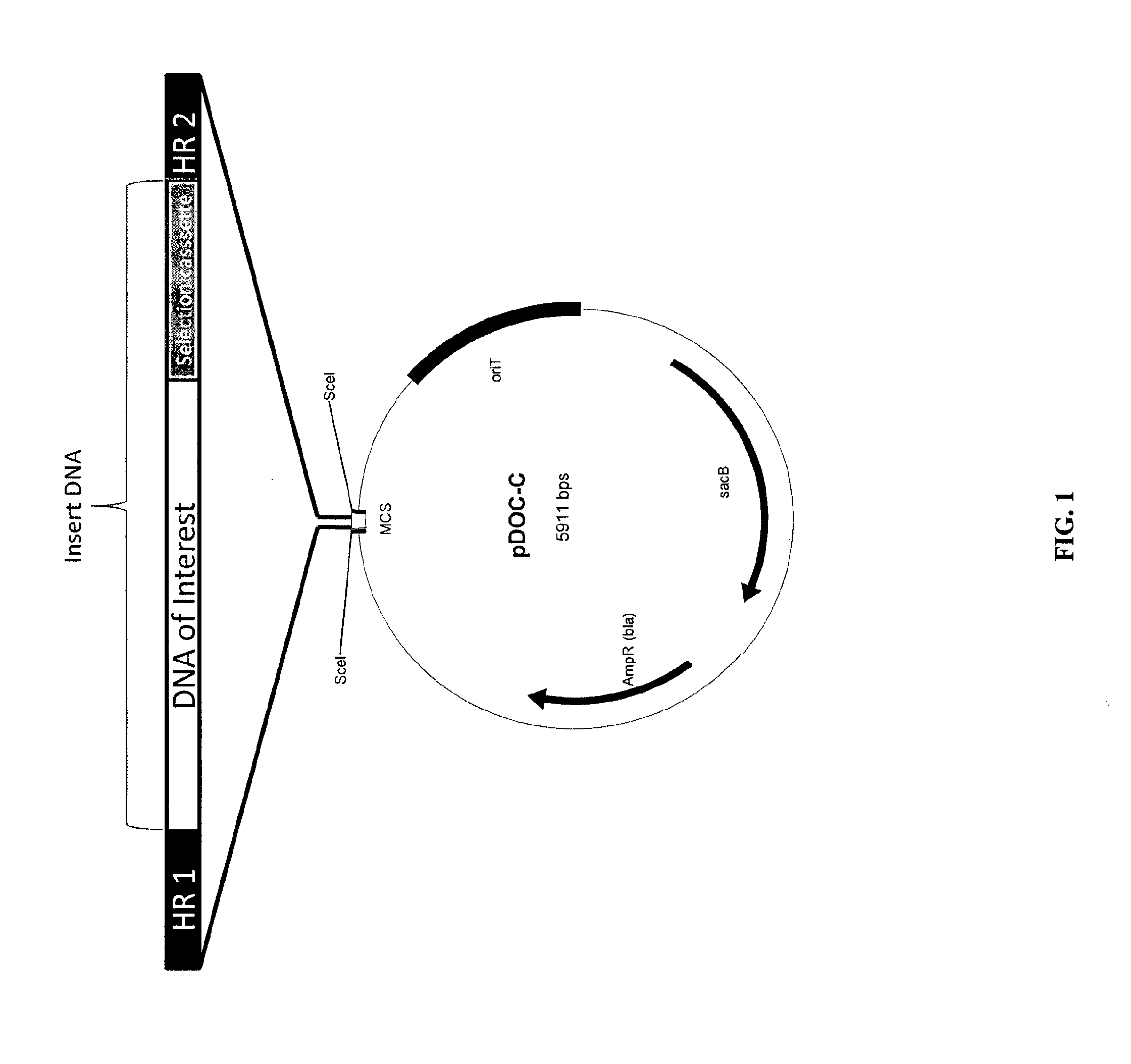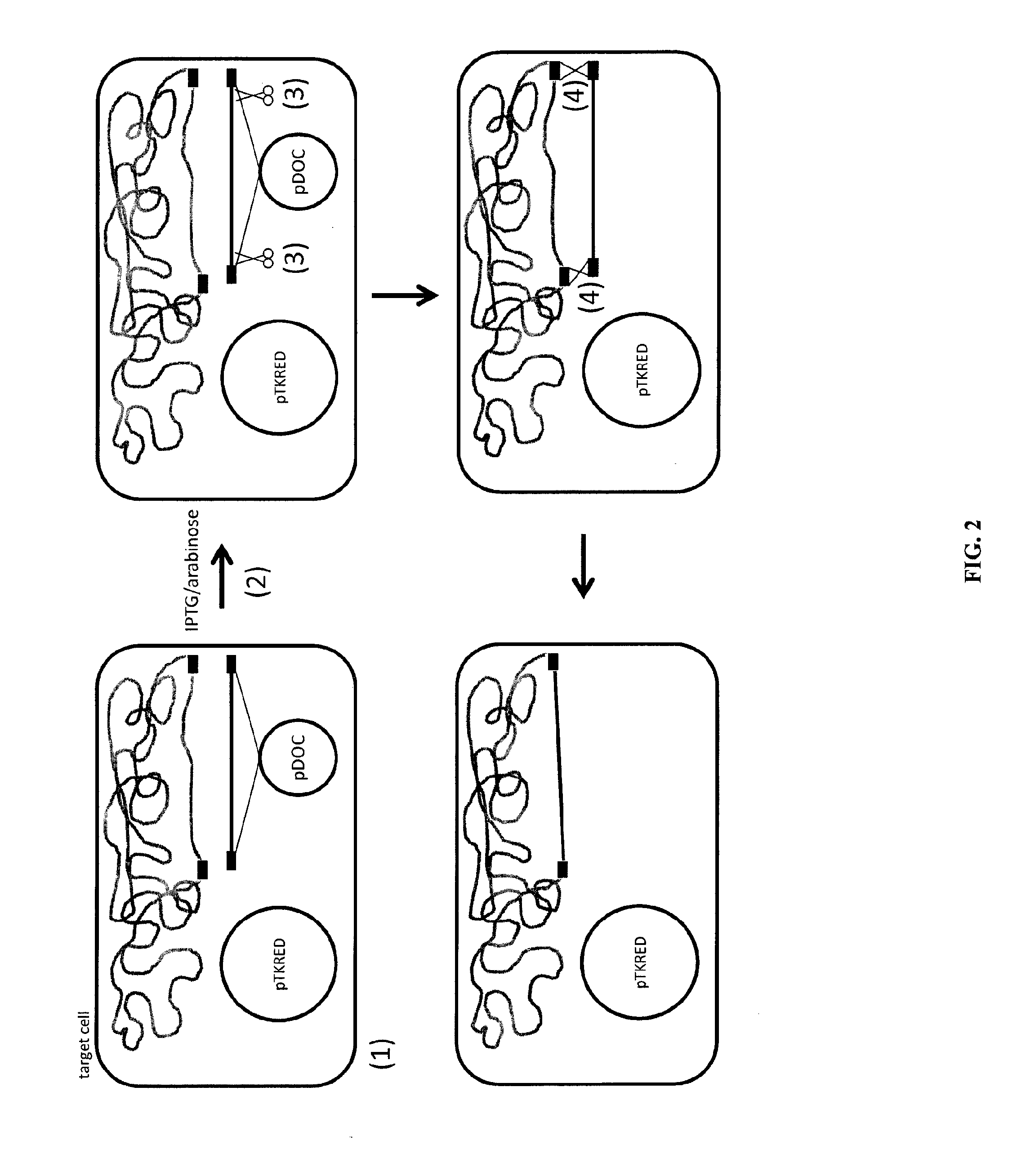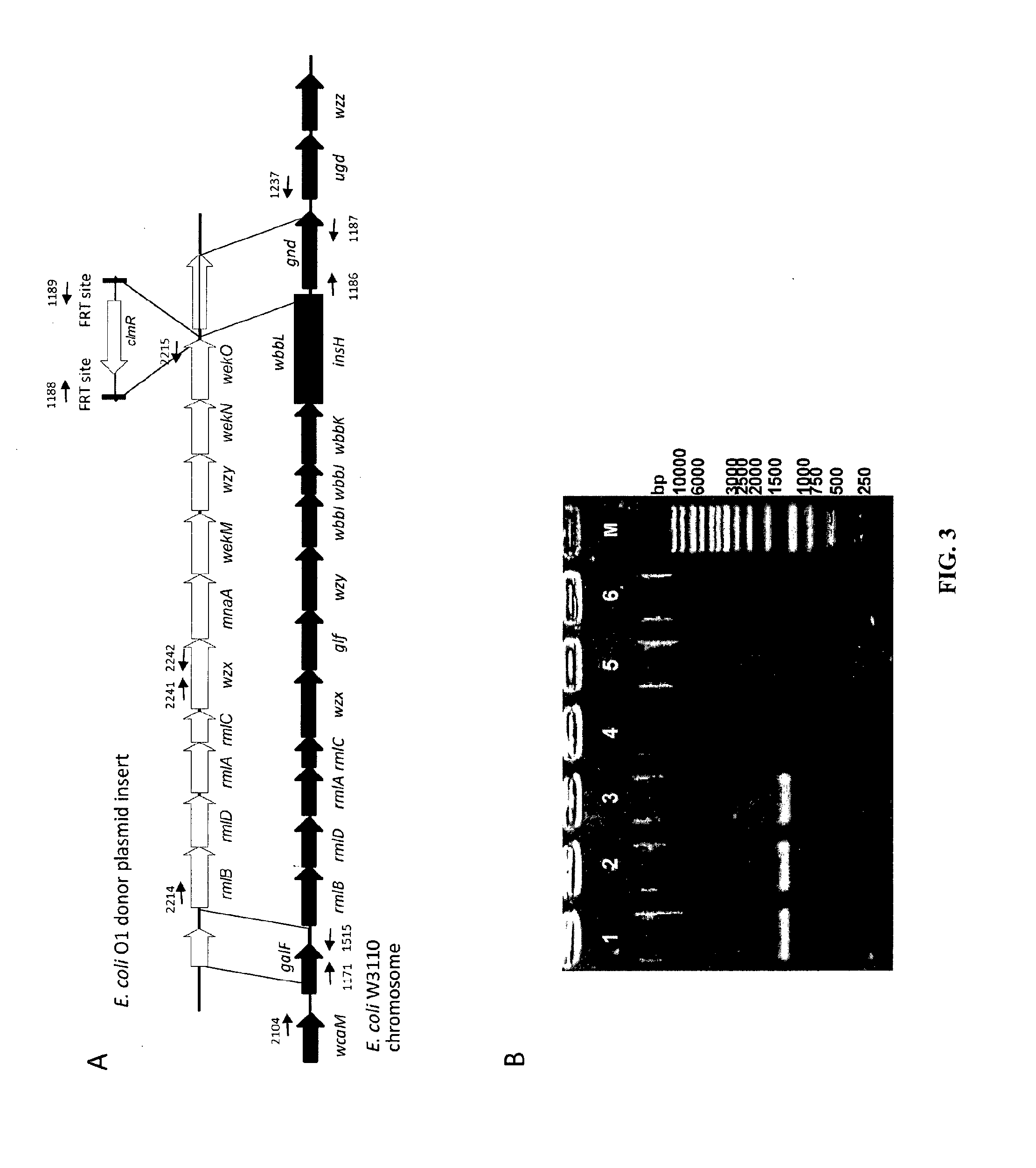Methods of host cell modification
a technology of host cells and plasmids, applied in the field of host cell modification, can solve the problems of limited number of cosmids and fosmids available, difficult to combine multiple large dna fragments in a single cell, and often genetically unstable standard expression plasmids
- Summary
- Abstract
- Description
- Claims
- Application Information
AI Technical Summary
Benefits of technology
Problems solved by technology
Method used
Image
Examples
example 1
6.1 Example 1
Strain Construction for E. coli O1 O Antigen Conjugate Production
[0231]The first step to insertion is the cloning of the O1 rib cluster into the donor plasmid pDOC by standard molecular cloning techniques [1]. The O1 rib cluster region was cloned into plasmid pLAFR1 for to confirm activity (A, below) and in parallel into the donor plasmid pDOC for inserting the O1 cluster into the genome (B, below).
[0232]A. The O1 rfb cluster and its flanking 1.5 kb regions were subcloned into the cosmid vector pLAFR1 (GenBank: AY532632.1). The O1 cluster was amplified by PCR from chromosomal DNA of a clinical isolate named upecGVXNO32 (StGVXN3736) using oligonucleotides 2193 / 2161 (see Table 3). Oligonucleotides 2193 / 2161 anneal in the genes flanking the O1 rfb cluster, namely in galF and after gnd. The PCR product was cloned into SgsI sites of p157. p157 is a pLAFR1 containing a cassette composed of two complementary oligonucleotides (300 / 301) which were cloned into the EcoRI site resu...
example 2
6.2 Example 2
Strain Construction for E. coli O2 O Antigen Conjugate Production
[0252]Strain construction was performed similar to Example 1. The O2 rfb cluster was cloned in a pDOC plasmid consisting of the HR regions and a cassette as detailed in table 1. The O2 rfb cluster was amplified from clinical isolate upecGVXN116 (StGVXN3949) with oligos 2207 / 2166 and cloned into the BamHI / SgsI sites of p967. The O2 rfb amplicon contained all sequence from within galF until wekR. The DNA between wekR and gnd was omitted from the DNA insert. p967 was cloned by insertion of an oligocassette composed of two partially complementary oligonucleotides (2167 / 2168) into the XhoI and BamHI sites of p946. p946 was obtained by digesting p843 with AscI, treatment of the linearized plasmid with the Klenow fragment of DNA polymerase to fill up cohesive restriction site ends, and consecutive religation of the plasmid. p843 was generated by cloning a PCR amplicon derived from pKD4 [13] using oligonucleotides...
example 3
6.3 Example 3
Strain Construction for E. coli O6 O Antigen Conjugate Production
[0264]Strain construction was performed as described above. The 06 rfb cluster was cloned in a pDOC plasmid consisting of the HR regions and a kanR cassette as detailed in table 1. The 06 cluster was amplified from genomic DNA from E. coli strain CCUG11309 with oligonucleotides 1907 / 1908 (FIG. 11 A) and cloned into the BamHI and BcuI sites of p843 resulting in p914.
[0265]The p999 helper plasmid (GenBank: GU327533.1) was introduced into W3110 cells by electroporation[1]. 5-500 ng DNA in water were mixed with 50 μl electrocompetent cell suspension in a standard electroporation cuvette on ice and electroporated in a BioRad Micro Pulser (BioRad) at a voltage of 1.8 kV for 2-10 ms. Because of the temperature sensitive replication phenotype of p999, resulting cells were plated and grown at 30° C. at all times. In a next step, p914 was introduced into W3110 bearing p999 by electroporation, and cells were selected...
PUM
| Property | Measurement | Unit |
|---|---|---|
| Digital information | aaaaa | aaaaa |
| Digital information | aaaaa | aaaaa |
| Digital information | aaaaa | aaaaa |
Abstract
Description
Claims
Application Information
 Login to View More
Login to View More - R&D
- Intellectual Property
- Life Sciences
- Materials
- Tech Scout
- Unparalleled Data Quality
- Higher Quality Content
- 60% Fewer Hallucinations
Browse by: Latest US Patents, China's latest patents, Technical Efficacy Thesaurus, Application Domain, Technology Topic, Popular Technical Reports.
© 2025 PatSnap. All rights reserved.Legal|Privacy policy|Modern Slavery Act Transparency Statement|Sitemap|About US| Contact US: help@patsnap.com



